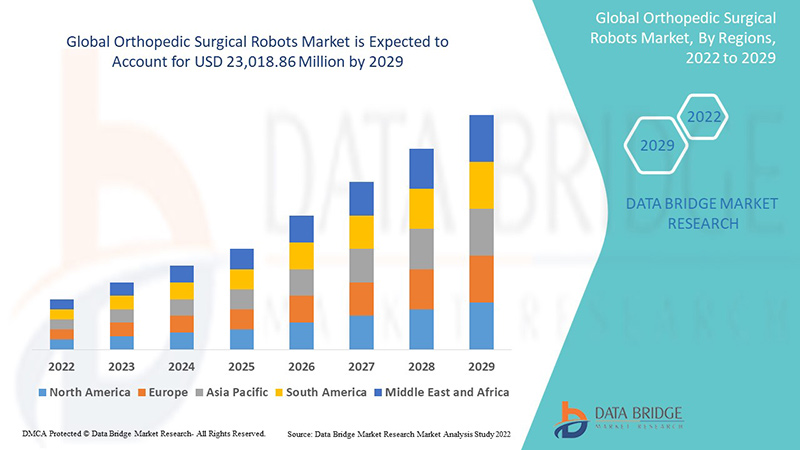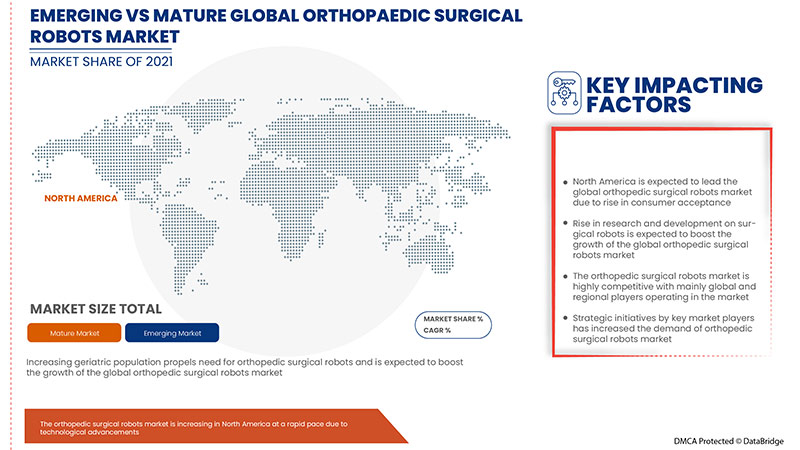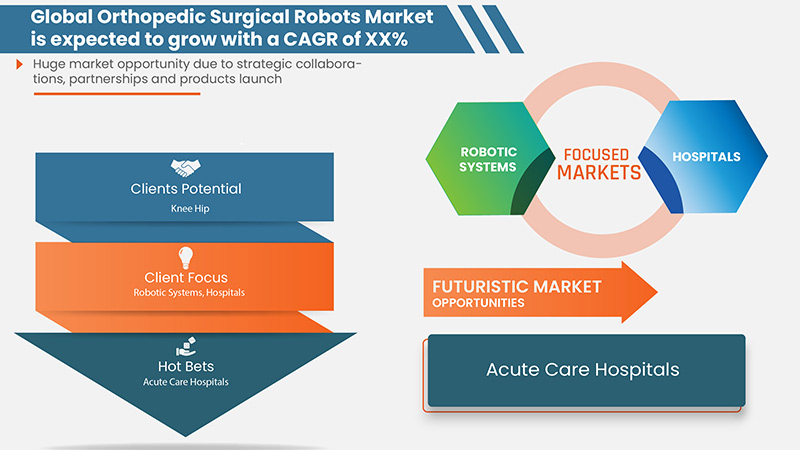

The
Orthopedic Surgical Robots Market
is undergoing a significant transformation, with industry forecasts predicting rapid expansion and cutting-edge technological innovations by 2032. As businesses continue to embrace digital advancements and strategic shifts, the sector is set to experience unprecedented growth, driven by rising demand, market expansion, and evolving industry trends.
A recent in-depth market analysis sheds light on key factors propelling the Orthopedic Surgical Robots market forward, including increasing market share, dynamic segmentation, and evolving consumer preferences. The study delves into crucial growth drivers, offering a detailed outlook on industry progress and future potential. Additionally, the report leverages SWOT and PESTEL analyses to assess market strengths, weaknesses, opportunities, and threats while examining economic, regulatory, and technological influences shaping the industry's trajectory.
Competitive intelligence plays a pivotal role in this sector's evolution, with leading companies innovating and expanding across key regions. The latest market insights provide a comprehensive overview of emerging opportunities, investment hotspots, and strategic business approaches.
For businesses and investors looking to stay ahead in the Orthopedic Surgical Robots market, this report serves as a vital resource, offering data-driven insights and strategic recommendations to navigate market challenges and capitalize on future growth opportunities. As 2032 approaches, staying informed about industry trends will be crucial for maintaining a competitive edge in this fast-evolving landscape.
What is the projected market size & growth rate of the Orthopedic Surgical Robots Market?
Market Analysis and Insight
The orthopedic surgical robots market is largely influenced by the surging focus of key players towards technological advances in molecular diagnostics and indulging towards collaboration and partnerships with other organizations. The first documented use of orthopedic surgery had started during the 15th century. Modern orthopedic surgery and musculoskeletal research makes surgery less invasive and to make implanted components better and more durable. The orthopedic surgical robots are used to correct the bone deformities and to restore the function of the human skeletal system. During the last few years, new innovative orthopedic surgical robots products have been developed for increasing the growth of orthopedic surgical robots market, and the market players are enhancing their product portfolio. Many market players are involved in the manufacturing of orthopedic surgical robots with innovations that pave the way for market growth.


Global orthopedic surgical robots market report provides details of market share, new developments, and product pipeline analysis, impact of domestic and localized market players, analyses opportunities in terms of emerging revenue pockets, changes in market regulations, product approvals, strategic decisions, product launches, geographic expansions, and technological innovations in the market. To understand the analysis and the market scenario contact us for an analyst brief, our team will help you create a revenue impact solution to achieve your desired goal.
Data Bridge Market Research analyses that the orthopedic surgical robots market is expected to reach the value of USD 23,018.86 million by 2029, at a CAGR of 25.8% during the forecast period 2022-2029.
| Report Metric | Details |
|---|---|
| Forecast Period | 2022 to 2029 |
| Base Year | 2021 |
| Historic Year | 2020 (Customizable to 2019-2014) |
| Quantitative Units | Revenue in USD million, Pricing in USD |
| Segments Covered | By Product Type (Robotic System, Robotic Accessories, and Software and Services), End User (Hospital and Ambulatory Surgery Centers (ASCS)), Distribution Channel (Direct Tenders and Third Party Distributors) |
| Countries Covered | U.S., Canada, Mexico in North America. U.K., Germany, France, Spain, Italy, Netherlands, Switzerland, Russia, Belgium, Turkey, Rest of Europe in Europe. China, South Korea, Japan, India, Australia, Singapore, Malaysia, Indonesia, Thailand, Philippines, Rest of Asia-Pacific in Asia-Pacific. South Africa, Saudi Arabia, U.A.E., Israel, Egypt, Rest of Middle East and Africa (MEA) in Middle East and Africa. Brazil, Argentina and Rest of South America in South America. |
| Market Players Covered | Johnson & Johnson Services, Inc., Stryker, Zimmer Biomet, Smith & Nephew, Corin Group, NuVasive, Inc., Brainlab AG, Integrity Implants Inc. d/b/a/ Accelus, Beijing Tinavi Medical Technologies Co., Ltd, Medtronic, Globus Medical, Inc., Accuray Incorporated, THINK Surgical, Inc., CUREXO, INC. are among others. |
Market Definition
The orthopedic surgical robots are used to correct the bone deformities and to restore the function of the human skeletal system. It uses energy such as radiation, radio frequency, and ultrasound to seal the skin and bone tissue. The orthopedic surgical robots require an energy source, such as an electro surgery generator (ESU), and an instrument to transfer the energy to the patient. The important types include radio frequency (RF), modified electrical current, and ultrasound, which converts electrical current into mechanical motion. More specialized technologies include those that use argon gas, plasma, or a combination of technologies. The technological advancements used in the orthopedic surgical robots are ultrasound, radiofrequency, and radiation. The diagnostic technology used in the orthopedic surgical robots have permitted orthopedic surgeons to achieve new levels of precision and safety. It provides a surgeon to diagnose, plan, and expedite the orthopedic surgery for outstanding results.
Orthopedic Surgical Robots Market Dynamics
This section deals with understanding the market drivers, advantages, opportunities, restraints and challenges. All of this is discussed in detail as below:
DRIVERS